
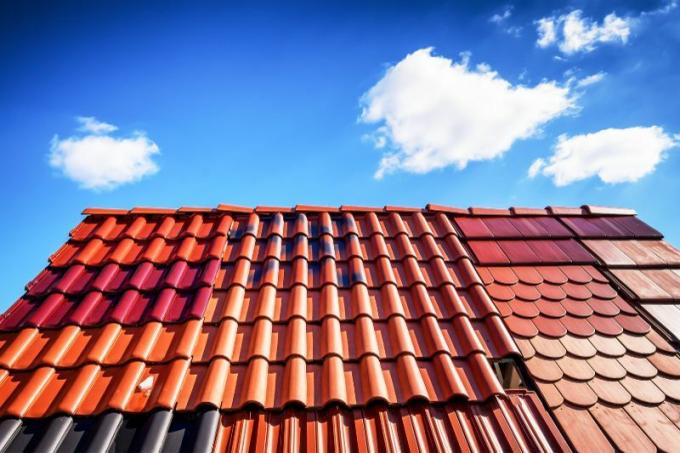
Table of contents
- roofing in general
- Beavertail roof tiles
- double groove interlocking tile
- Three – troughed interlocking tiles
- flat roof tiles
- Flat bricks/ smooth bricks
- large area bricks
- Frankfurt pan
- interlocking tiles
- hollow brick
- reform brick
- S - pan
- frequently asked Questions
The roof forms the upper end of a building and is used both to protect against various environmental influences and for the overall visual design. The wide range of different roof tile types offers a solution for every requirement and taste.
roofing in general
Roof coverings are differentiated according to the material. The most important are clay roof tiles, concrete roof tiles, metal profile sheets and bitumen, also known as "roofing paper". Corresponding properties such as service life, weight or resistance to environmental influences, moss infestation or dirt deposits are derived from the material.
The selection of roof tile types listed below is intended to help you
as a guide for planning your project serve.Beavertail roof tiles
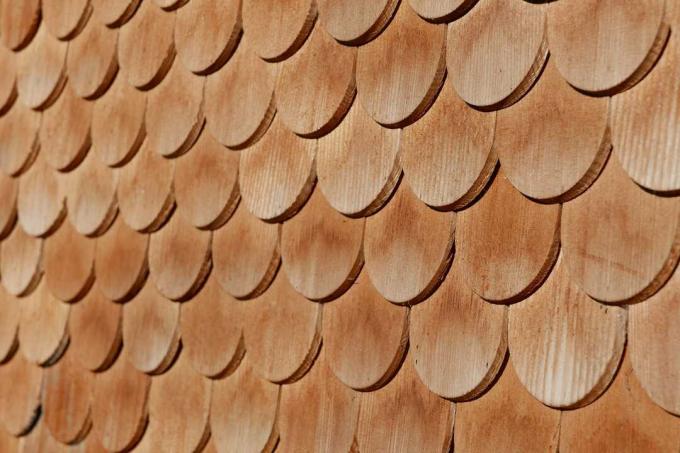
The unusual shape of the plain tile roof tiles creates a unique overall picture. They are small, flat and rounded at the bottom. Due to the small dimensions, the number of pieces and the resulting weight are relatively large, which is why the substructure has to be very stable. A smaller special form is the Berlin beaver.
- material: clay burned
- shape: upper edge straight, lower edge semicircular, smooth
- Color: different colors
- Price: 1EUR per brick, 34 bricks per m²
- Suitable for: 30° roof pitch
double groove interlocking tile

Double groove interlocking tiles are suitable for the restoration of old agricultural buildings. They were often used in this area because they drain rainwater very well with their two troughs. A fold at the head end and on the side offers additional protection against the ingress of water, which is why this type of roof tile is even storm-proof.
- material: clay burned
- shape: rectangular, 2 shallow wells
- Color: different colors
- Price: 2EUR per brick, 14 bricks per m²
- Suitable for: 30° roof pitch
Tip:
Did you know that in some places there are regulations about permitted roofing colors? If you are considering a fancy color, find out if your city has such a rule.
Three – troughed interlocking tiles
Similar to the double trough interlocking bricks are three – trough interlocking bricks. They also have troughs for water drainage and a fold at the head end and on the side to protect against the ingress of rain. The additional trough also offers additional width, which is why three - trough interlocking tiles are very suitable for large areas.

- material: Fired clay, engobed
- shape: rectangular, 3 wells
- Color: different colors
- Price: 2EUR – 3EUR per brick, 6 bricks per m²
- Suitable for: 22° roof pitch
flat roof tiles
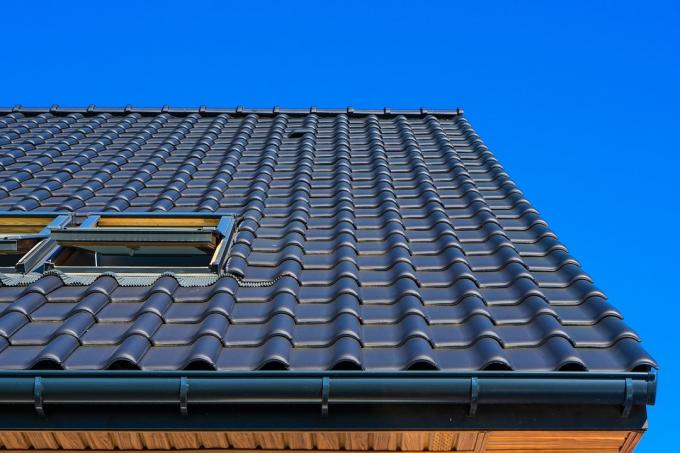
Very low pitched roofs (10° - 22°) pose a particular challenge, since rainwater only drains off slowly here and can penetrate into the substructure. For this kind of pitched roof Flat roof tiles are best suited. They are curved on one side, which creates channels on the roof through which rainwater reliably drains.
- material: Clay engobed
- shape: rectangular, curved on one side
- Color: different colors
- Price: 2EUR – 4EUR per brick, 8 – 9 bricks per m²
- Suitable for: 10° - 22°
Flat bricks/ smooth bricks
You can achieve a smooth and modern overall picture with flat tiles. They have no curvature and the load on the roof truss is very well distributed thanks to the symmetrical shape. Unevenness that occurs, for example, when cutting for skylights, is quickly noticeable.
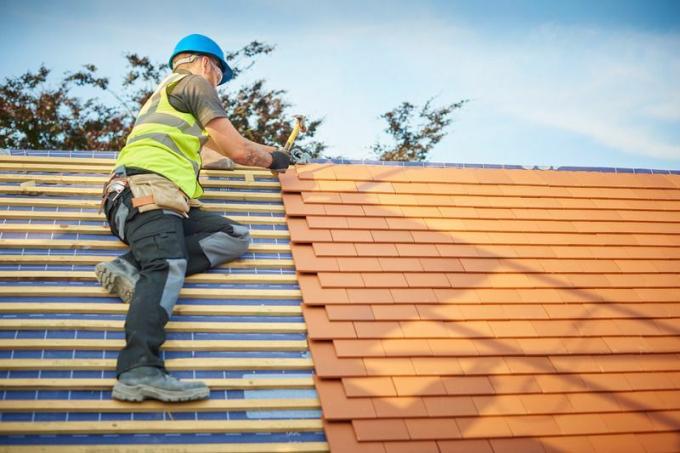
- material: Fired clay, engobed
- shape: rectangular, flat
- Color: different colors
- Price: 2EUR - 3EUR per brick, 10 - 13 bricks per m², increased due to the effort involved in cutting
- Suitable for: large areas from a roof pitch of 22°
large area bricks
For large roofs there is the problem of a high cost of materials. The easiest way to solve this is with smooth, large-area tiles. The resulting smooth surface looks simple and uniform and can be easily broken up with roof decorations.
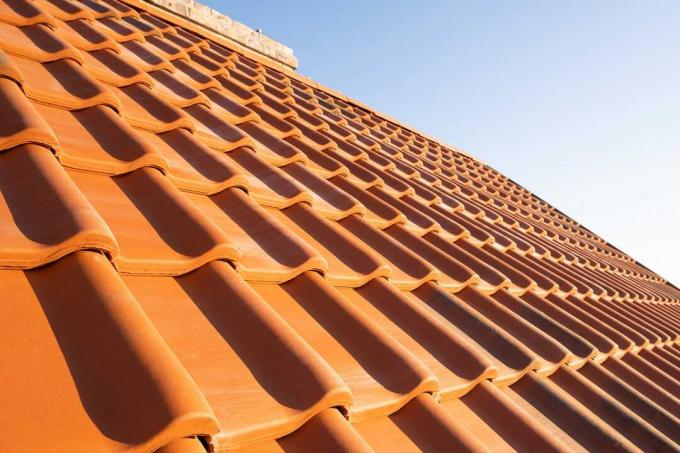
- material: Fired clay, engobed
- shape: rectangular, smooth
- Color: different colors
- Price: 2EUR per brick, 7 bricks per m²
- Suitable for: 22° roof pitch
Frankfurt pan
The most common type of roof tile in Germany is the Frankfurt pan. It has a curved shape and a special coating that repels dirt and growth and strongly reflects sunlight. It is therefore particularly suitable for buildings with a converted attic.
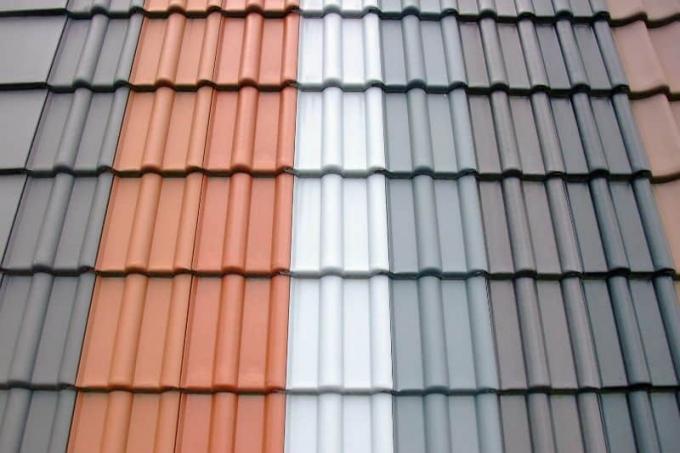
- material: Clay burned, Protegon
- shape: rectangular, wave profile
- Color: different colors
- Price: 1EUR – 2EUR per brick, 10 – 13 bricks per m²
- Suitable for: 22° roof pitch
interlocking tiles
A simple, elegant overall picture can be achieved with hollow interlocking tiles. They are slightly curved and have a trough for water drainage. Since they can also be used with a roof pitch of less than 22°, they are real all-rounders and are suitable for both new buildings and the renovation of older buildings.
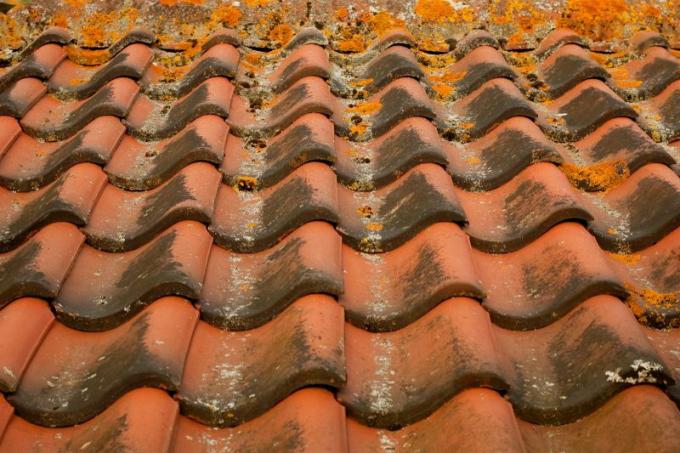
- material: clay burned
- shape: convex, 1 hollow
- Color: different colors
- Price: 2EUR per brick, 13 bricks per m²
- Suitable for: 22° roof pitch, possible from 10°
hollow brick
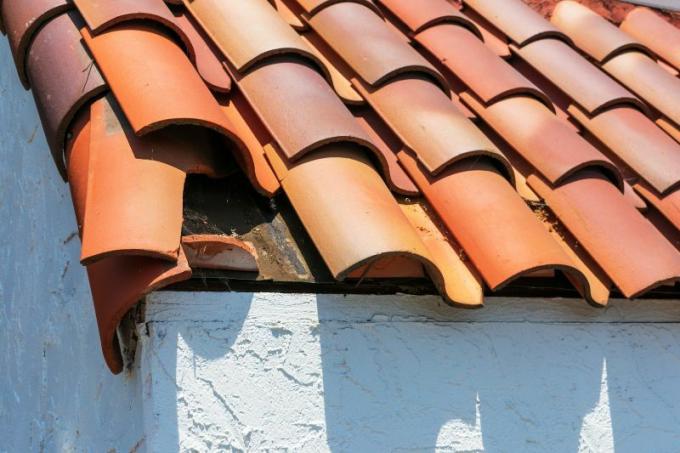
Hollow bricks are suitable for the renovation of listed buildings, especially in northern Germany. They have a curved shape and do not have a fold, which is why the installation should only be carried out by an experienced roofer. A large variety of variants of this type of roof tile result in different areas of application, e.g. B. for dormers, as a ridge or for playful monk-nun sections.
- material: clay burned
- shape: rectangular, arched
- Color: different colors
- Price: 1EUR per brick, 9 – 15 bricks per m²
- Suitable for: 22° roof pitch
reform brick
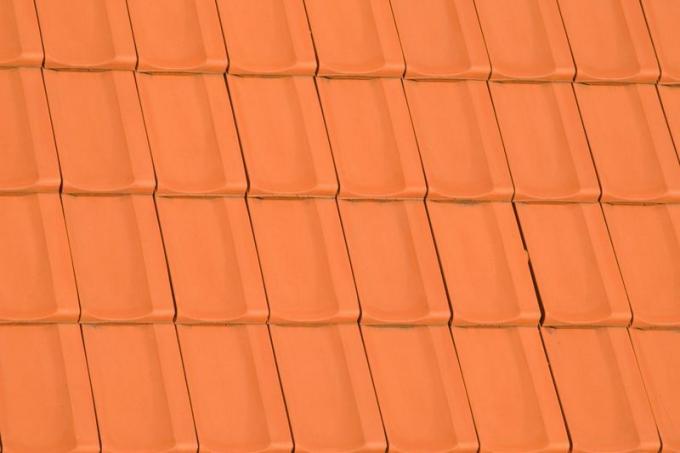
This simple type of roof tile has a flat, wide trough for water drainage and is a modern development of the flat tile. Due to their large displacement range, they are very well suited for renovation work.
- material: Fired clay, engobed
- shape: rectangular, flat trough
- Color: different colors
- Price: 2EUR per brick, 10 – 12 bricks per m²
- Suitable for: 30° roof pitch
S - pan
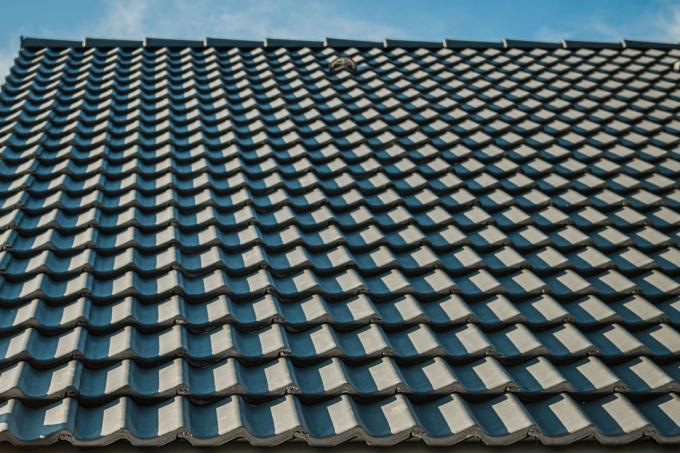
This type of brick has an S-curved shape and gives a soft, wavy overall impression. In addition to covering the entire roof, you can also integrate the S pantile into an existing covering as a passage tile for antennas, cables or pipes.
- material: Fired clay, engobed
- shape: rectangular, S-shaped
- Color: different colors
- Price: 1EUR – 2EUR per brick, 10 bricks per m²
- Suitable for: 22° roof pitch
Tip:
Discuss your project with a roofer and let him do it for you. This way you avoid unpleasant surprises and additional costs. You can lower the price by carrying out agreed preparatory work yourself.
frequently asked Questions
Engobing is a sealing process in which the brick is covered with liquid clay, similar to glazing. Among other things, it is used for coloring.
Roof tiles are made of baked clay containing iron. This iron content oxidizes during firing and produces the natural red color of the bricks. This is covered by coating processes such as engobing or glazing.
This is due to the definition of the word "roof tile". Clay roof coverings are called tiles. Those made of other materials have different designations. The presented species are also available in other materials.
 Mandy
Mandy
Learn more about roof / attic
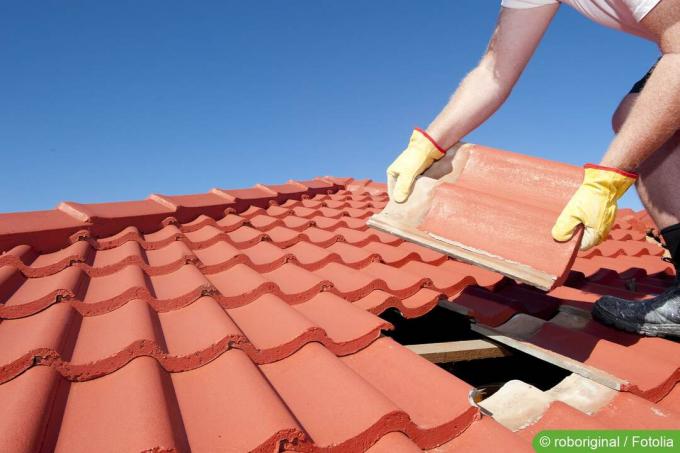
Snow blows under roof tiles: what to do?
Snow drifts often get under the roof tiles when blizzards or strong winds blow them underneath. The moisture often causes damage from meltwater. Air spaces between the roof tiles are to blame. Homeowners should now find out how to counteract this.
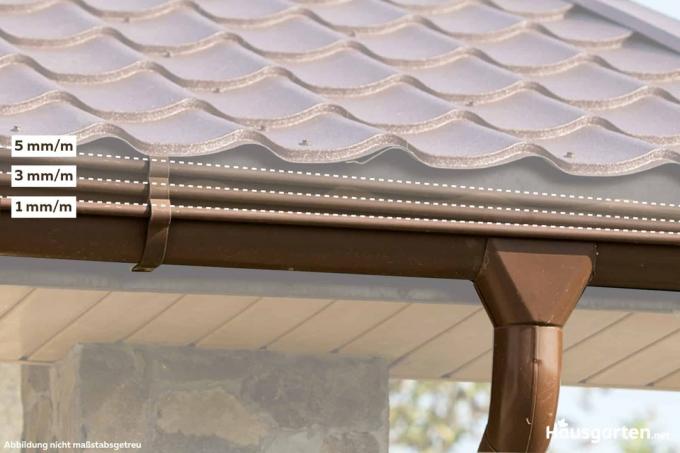
Gutter slope: the ideal gradient
For a gutter to function properly, a slope that has an ideal inclination is required. Various factors have to be taken into account. Before installation, you should find out how the gradient is to be calculated and implemented.
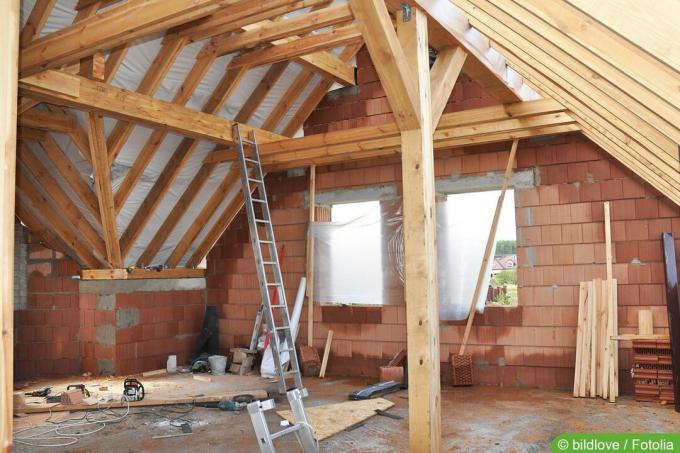
Which attic insulation can be walked on immediately?
Attic insulation effectively reduces heat loss from the building. If the attic is to continue to be used as storage space, the insulation should be accessible as soon as possible. A number of materials can be used for this. They each have advantages and disadvantages as well as different costs.
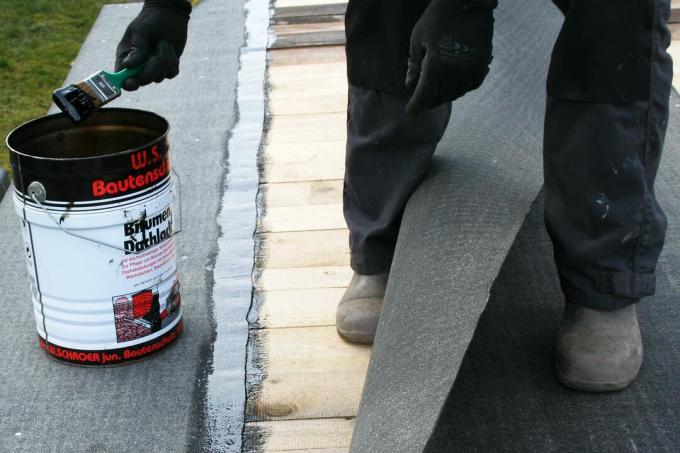
Bitumen stains: 6 removal tips
If you have to process bitumen, you should be careful. The black, viscous mass is sticky and adheres well to clothing, hands and all possible surfaces with which it comes into contact. With our tips you can successfully remove it.
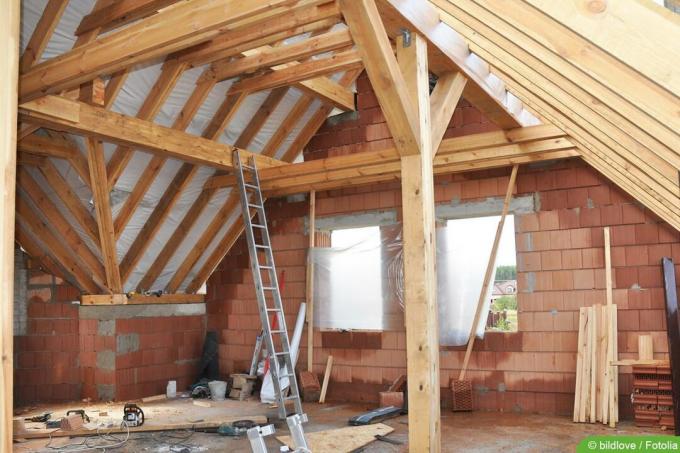
Attic: OSB or Rauspund as roof boarding?
Both OSB and Rauspund boards are suitable as roof boarding. But what are the differences and what is better suited for the attic? Our guide answers these and other questions about the two materials.

Laying a vapor barrier: how far does the vapor barrier have to go?
Laying a vapor barrier is essential in some cases. But how far does the vapor barrier have to be installed, what is it and what are the differences? These and more questions are answered in the following guide.
